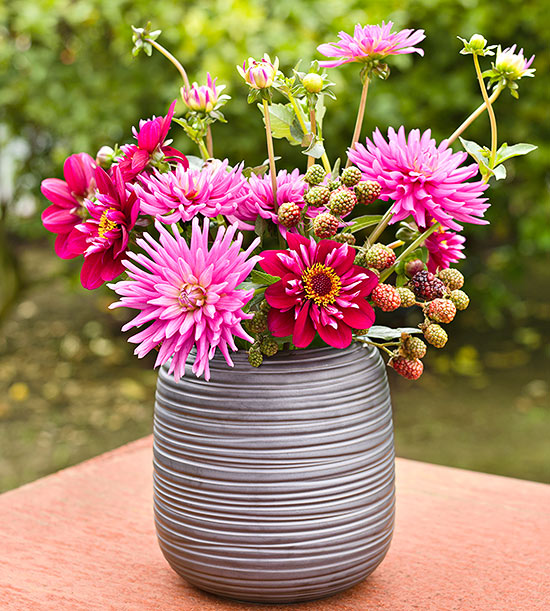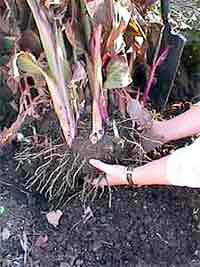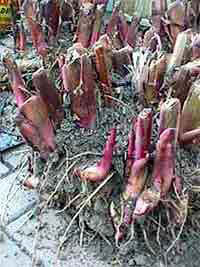






Frost brings an abrupt end to the growing season for tender bulbs -- cannas, callas, caladiums, dahlias, tuberous begonias, gladioluses, and tuberoses, to name some of the most common. Some might survive a winter outdoors in Zone 7 or warmer, but in colder climates they perish if left in the ground. You might think that the cost of new bulbs is low enough that it's not worth the hassle of digging and storing the bulbs. The thrifty among us dig them, however, and keep the same bulbs from year to year. Here's how.
The spectacular leaves and flowers of cannas are always a favorite of visitors to the Test Garden. But once the temperature drops to 28 degrees F. or so, the show ends and the leaves turn brown. Our dahlias, elephant ears, and glads look the same, so at that point it is time to bring them in.
continue reading below
To start the job, dig around the plant, being careful not to slice into the bulbs as you dig. lift the clump of roots from the ground and knock off as much soil as you can. Put the clumps in a dry, cool spot (but not where they might be exposed to freezing) for a week or so. When digging several varieties of bulbs, be sure to label each clump.

Once the clump has dried for a week, the remaining clods will crumble away easier. Don't worry if some dirt remains wedged among the roots. Place the roots in dry peat moss or vermiculite in a sturdy cardboard box. The peat moss will slow the loss of moisture from the roots and keep them from shriveling. Store the box at about 45 degrees F. (never below freezing) in a garage, crawl space, or basement. Warmer temperatures allow the roots to sprout in midwinter, and you don't want that to happen.
If you intend to divide the clumps, that's best left until you bring the roots out of storage in spring.
Copyright © www.100flowers.win Botanic Garden All Rights Reserved